Czarny Dunajec
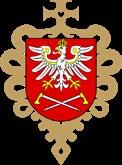
Surrounded by mountains
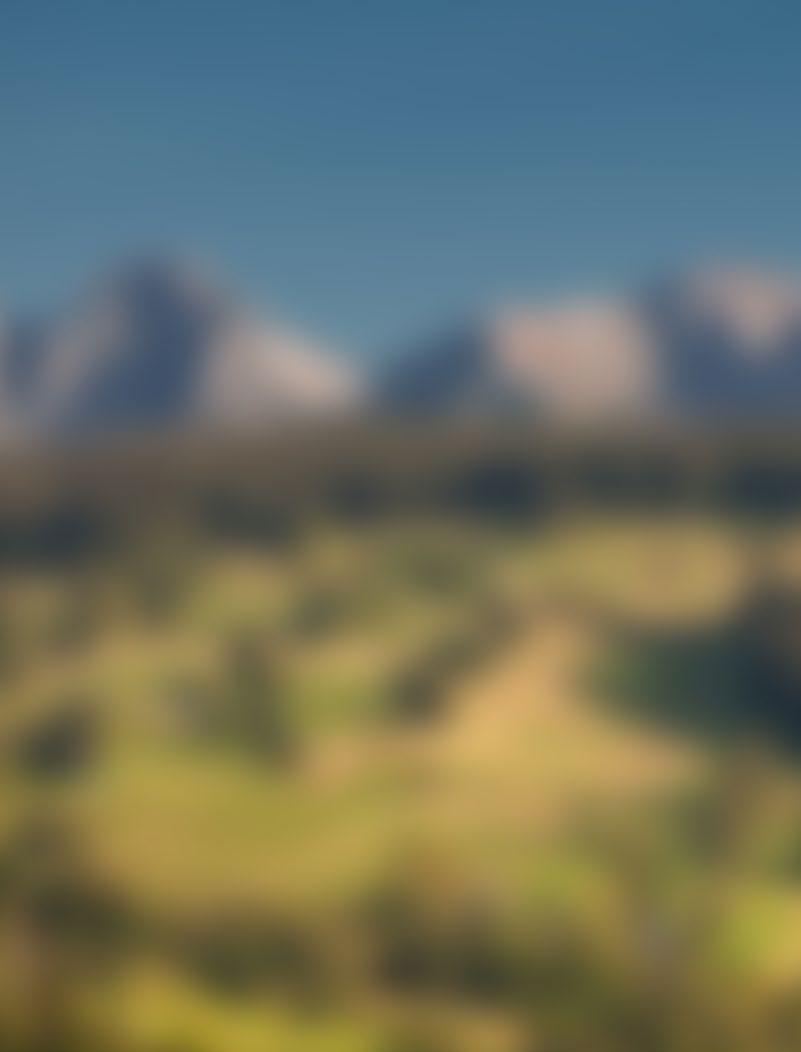
Podhale and Orawa Highlanders – people of rich and living traditions – dwell in a vast plain spreading at the foot of the Tatra Mountains and Babia Mountain. They inhabit numerous villages including the ones within Czarny Dunajec Commune – one of the largest communes in Lesser Poland which covers the area of 22,000 ha.
The commune lies in the valley of the Czarny Dunajec River and in the area of uplands, valleys and the Beskids. This location makes the place diverse in terms of the wildlife, hence, very interesting. The areas of the commune are strongly shaped by vanishing agriculture and sparsely wooded. The lack of dense forests does not affect the attractiveness of the place as there are many other natural treasures. We can admire boglands which used to be vast and now are in the form of isolated islands. They are home to delightful plants specific to such an ecosystem. In the past, the bogs spread from Babia Mountain to the Tatras but unfortunately they have been destroyed by peat extraction. Another treasure of the place is hidden deep under the earth’s surface – geothermal waters.

Podhale Highlanders, who inhabit the commune, live in the spirit of deeply rooted and still living traditions. They are folk artists – painters, sculptors and musicians. You will find there a multitude of folklore bands and events promoting local culture and art. In regional restaurants and at regional events one can taste traditional cuisine of the land. Historic architecture will delight you at every step and Chochołów is a living museum!
Czarny Dunajec Commune is ideal for both summer and winter holidays. It is a great starting point if you want to travel in the direction of the Tatras, the Beskids, the Gorce and the Pieniny Mountains. There are thermal pools, cycling paths, it is close to ski stations and far from the crowds of Zakopane. czarny-dunajec.pl
2 Czarny Dunajec INTRODUCTION 3
Voivodeship: Lesser Poland
Poviat: Nowy Targ

Seat: Czarny Dunajec
Villages: Chochołów, Ciche, Czarny Dunajec, Czerwienne, Dział, Koniówka, Odrowąż, Piekielnik, Pieniążkowice, Podczerwone, Podszkle, Ratułów, Stare Bystre, Wróblówka, Załuczne
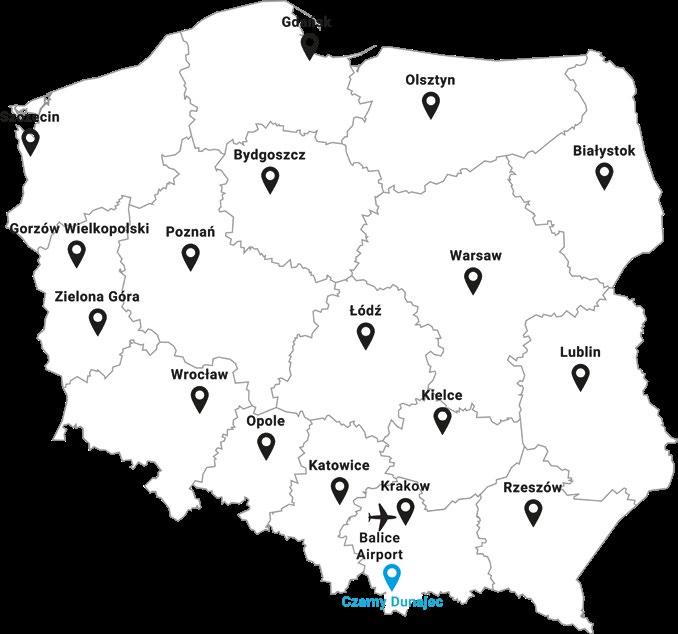
Area: 218.34 km²

Population: 22,423
Lesser Poland
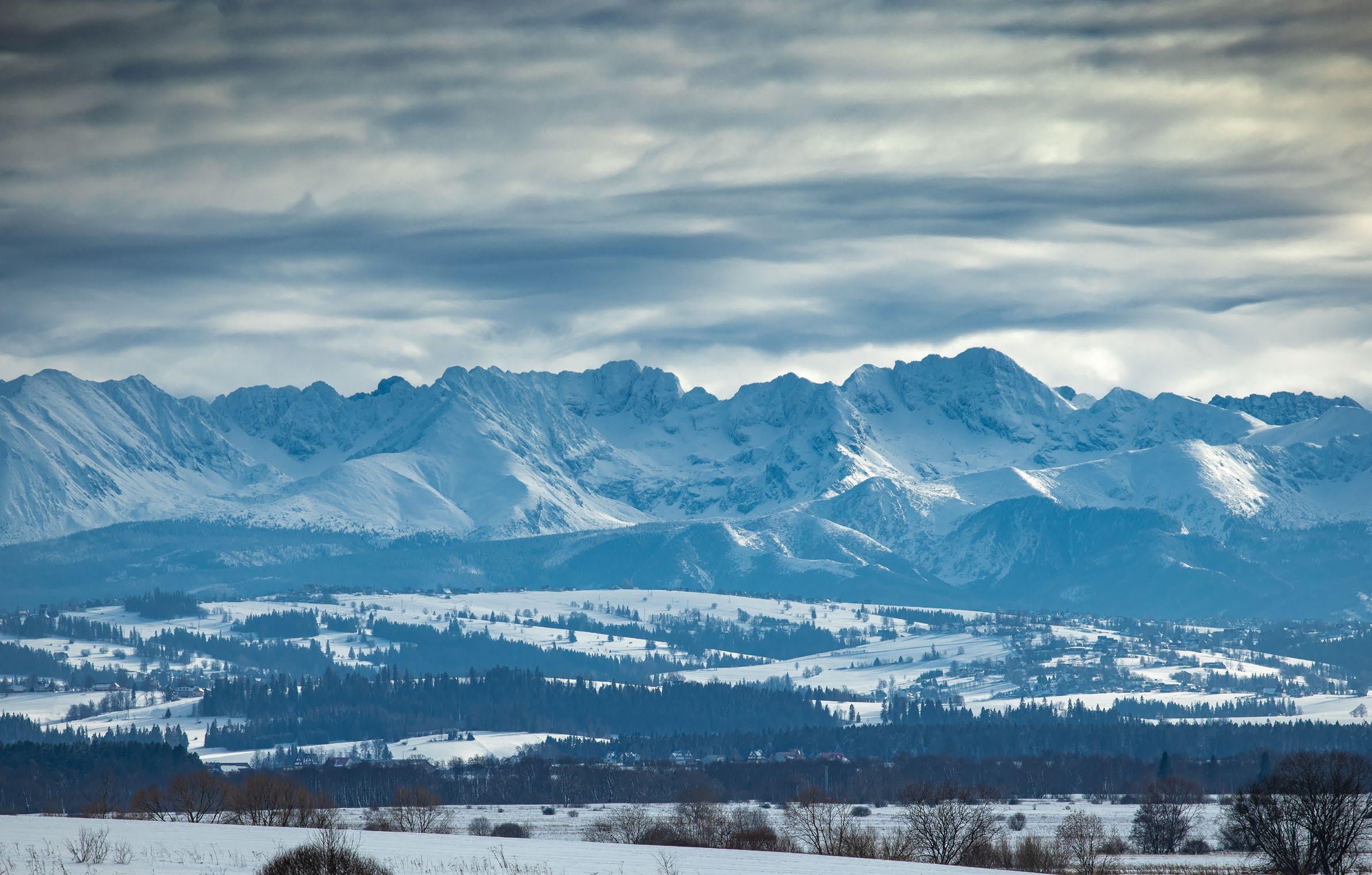
Rabka-Zdrój
Krynica-Zdrój Uście Gorlickie DISTANCE BETWEEN CZARNY DUNAJEC AND OTHER VOIVODESHIP CITIES CITY TIME DISTANCE Białystok Bydgoszcz Gdańsk Gorzów Wielkopolski Katowice Kielce Krakow Lublin Łódź Olsztyn Opole Poznań Rzeszów Szczecin Warsaw Wrocław Zielona Góra 590 km 565 km 680 km 628 km 163 km 220 km 95 km 421 km 362 km 607 km 272 km 542 km 247 km 730 km 397 km 354 km 524 km 6 h 50 min 6 h 30 min 7 h 20 min 6 h 50 min 2 h 20 min 3 h 20 min 1 h 40 min 4 h 50 min 4 h 40 min 7 h 40 min 3 h 30 min 6 h 10 min 2 h 50 min 7h 50 min 5 h 10 min 4 h 10 min 5 h 50 min
Cracow - Swoszowice Czarny Dunajec Piwniczna-Zdrój Szczawnica
Muszyna
4 5 Czarny Dunajec GENERAL INFORMATION
Geography/location
Where regions meet
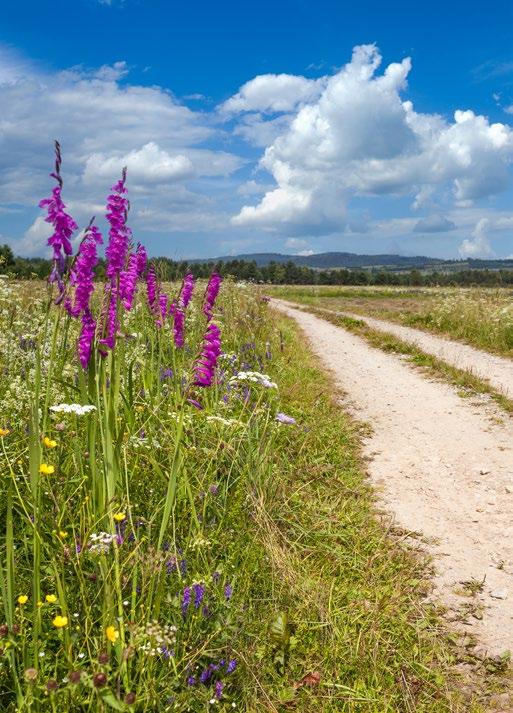
Czarny Dunajec Commune is in the south of Lesser Poland, in Podhale, between the Żywiecki Beskids and the Tatras. It is located in the area of four smaller geographical units – the Gubałowski Highlands, the Orawa Basin, the Nowy Targ Basin and the Orawa-Podhale Basin. The first three units are a part of the Central Western Carpathians (the Tatras are also a part of them) whereas the Orawa-Podhale Basin is a part of the Outer Western Carpathians altogether with the Polish Beskids. These vast Carpathian units are diverse in terms of structure and nature. The border between them goes through the Piekielnik Orawski and the Piekielnik Valleys. The European Watershed of the Baltic and the Black Sea crosses this land. Numerous rivers and streams flow into the Dunajec and further to the Baltic Sea. The tributaries of the Orava River flow into the Danube and then, across many European countries, to the Black Sea.
The commune has diverse altitudes. Its lowest parts are at the height of 650 – 700 metres. However, the highest ones in the Gubałowski Highlands rise over the height of 1,000 metres. The proximity of high mountains, the Tatras and the Beskids, creates a characteristic climate for a mountain area. Czarny Dunajec is sparsely wooded – forests cover only 15% of its surface. Here you can come across upland raised bogs with very rare species of plants typical for this type of place: the sundew, the bog moss, the orchis, the cranberry, the cottongrass or the bog bilberry. The peatlands are also home to numerous interesting animals such as the black stork, the black grouse, the tawny owl, the common buzzard, the European honey buzzard, the little owl, the moose, the wolf, the deer or the bear. The most popular peatlands include Puścizna Wielka, Puścizna Mała, Rękowiańska, Rudno and Baligówka.




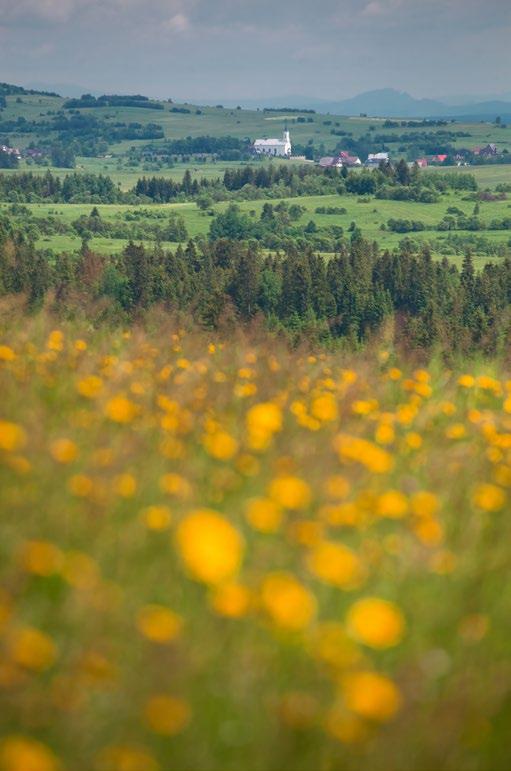
 The Cycling Route around the Tatras in Podczerwone
The Cycling Route around the Tatras in Koniówka
Meadows over Piekielnik
Baligówka Boglands in Czarny Dunajec
The Tatras seen from over Chochołów
Chochołów – Thermal Baths and the vicinity
The Cycling Route around the Tatras in Podczerwone
The Cycling Route around the Tatras in Koniówka
Meadows over Piekielnik
Baligówka Boglands in Czarny Dunajec
The Tatras seen from over Chochołów
Chochołów – Thermal Baths and the vicinity
Czarny Dunajec GEOGRAPHY/LOCATION 6 7
Historic architecture of Chochołów in the Czarny Dunajec Valley
GEOTHERMAL WATER
Geothermal water i.e. water whose temperature is above 20°C constitutes local treasure. It is heated naturally under the earth’s surface. In Chochołów there is the largest thermal pool complex in Podhale and one of the largest ones in Poland built over the springs of these waters. Being there, you may take either healing or relaxing baths.
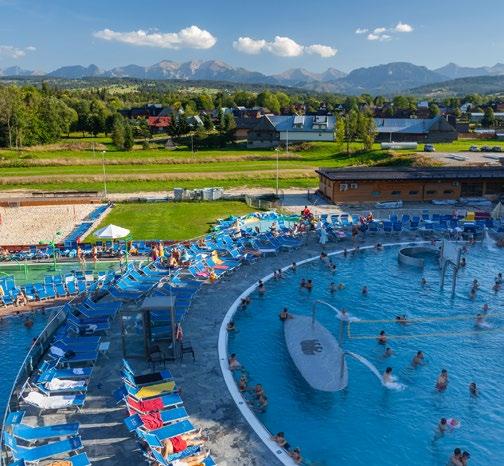
THE PEATLAND MUSEUM IN CHOCHOŁÓW

The biggest, cross-border complex of bogs is located within Czarny Dunajec Commune and Žilina Region in Slovakia. The peatlands were formed at the end of the last Ice Age approximately 10,000 years ago. In order to protect these valuable areas, a Polish-Slovak project was launched. Its main aim is to make the bogs available to people and educate about their ecosystem, plants and animals which inhabit them. It also guides us on how to admire peatlands without destroying them and promotes their protection. The Peatland Museum in Chochołów, located in a modernised, wooden building (a former medical centre), is a place where knowledge about the formation and functioning of peatland ecosystems is presented in a modern way.
THE ORAVA BASIN
The Orava Basin is undoubtedly a curiosity of Czarny Dunajec Commune. It is a plateau formed a few million years ago which divides the surrounding areas in drainage basins of the Black and Baltic Sea. The basin is a part of the European Watershed. The ridge which divides both basins goes through Pająków Wierch (934 m), Bukowiński Wierch (940 m) and Żeleźnica (912 m).
BALIGÓWKA BOGLANDS – AN EDUCATIONAL TRAIL
One of the raised bogs is located in Czarny Dunajec –there is an educational path called ‘Baligówka’. You will see there plants typical for this kind of an ecosystem such as the peat moss, the round-leaved sundew, the marsh Labrador tea, the bog rosemary, the purple marsh locks or the bogbean. The plants from the nearby meadows are also interesting and not common – the plume thistle, the marsh helleborine, the ragged robin, the broad-leaved marsh orchid, the heath spotted orchid or the sword lily (gladiolus imbricatus). The path consists of 12 stops with boards displaying various information connected with bogs.
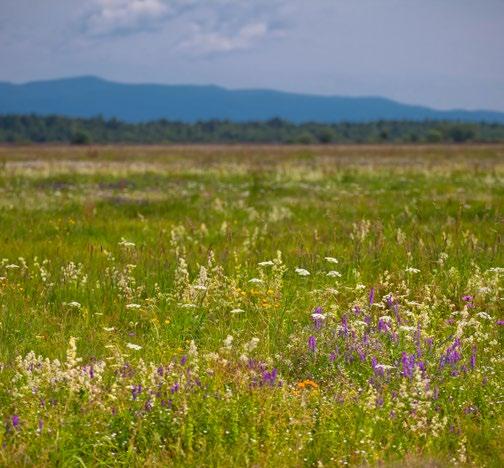
A SPECIFIC CLIMATE OF PODHALE
Czarny Dunajec Commune is characterised by diverse climate conditions which are connected with its landform. Mountain climatic zones can be distinguished here. The cool temperate climate is specific to the Orawa-Podhale Beskid and the Gubałowskie Highlands. The Orawa-Nowy Targ Basin, despite the fact that it is located in the warm temperate zone, has characteristic features for the climate of valleys and basins. In winter, we can observe a very common phenomenon – cold air stagnation with fogginess which can result in a temperature inversion which increases along with an altitude. In summer, however, it is warmer in the valleys than on the surrounding hills. It results in large amplitudes of annual temperature in comparison to nearby areas.
THE MOUNTAIN WITH THE VIEW OF ALL DIRECTIONS THE WORLD
Bachledówka Mountain (947 m) rises between villages Ratułów and Czerwienne in the Gubałowski Highlands. From the top of it, wonderful views of every direction of the world spread. In the south, you will see the majestic Polish and Slovak Tatras. In the north-east, the Pieniny will be visible from a distance. In the north, one may admire the Gorce Mountains. In the west, Babia Mountain and Pilsko (the peaks of the Żywiec Beskids) will be visible. If you want to take a short, peaceful walk and admire beautiful views, Bachledówka will be an ideal place for you.

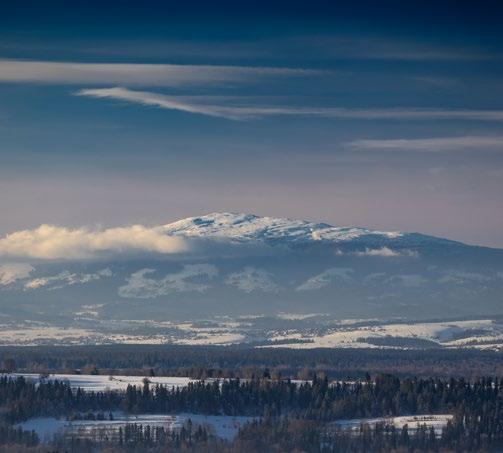
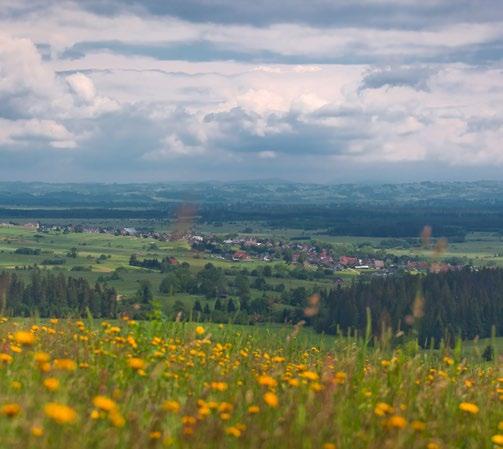
INTERESTING FACTS
1 4 5 6 3 2 Czarny
INTERESTING FACTS 8 9
Dunajec
Spa
Water heated under the surface of the Earth
Czarny Dunajec is the youngest out of all the spas in Lesser Poland. It was granted the status of spa protection in 2016. The largest treasure of the commune is water (not mineral as you will not find it in Podhale) – geothermal water. It is water which is heated in the Earth’s interior to at least 20°C. A borehole of geothermal water was drilled in Chochołów and the largest complex of thermal pools with attractions both for children and adults in Podhale was created.
What can be treated?
Sulphide water has an anti-inflammatory effect, helps to treat rheumatoid and joint diseases or arteriosclerosis. Thanks to it, our skin is more flexible. It also has a positive effect on skin blood flow, blood pressure and heart efficiency. It triggers our metabolism and strengthens our immunity.
The spa offers treatment of the following diseases: orthopaedic disorders and injuries, rheumatic diseases, gynaecological diseases.
What treatments?
Czarny Dunajec Commune is a new spa but offers numerous interesting treatments. Chochołowskie Thermal Baths give us a chance to benefit from saline and sulphide baths. There are water jets, hydromassages, relaxation and physiotherapeutic treatments or a Rhassoul

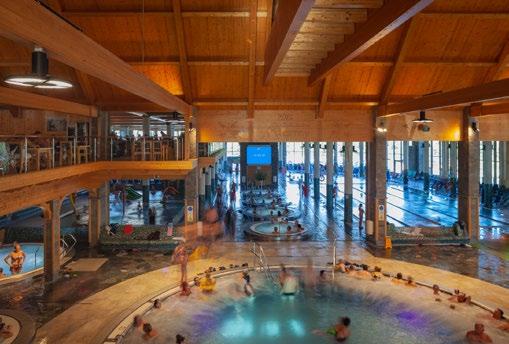
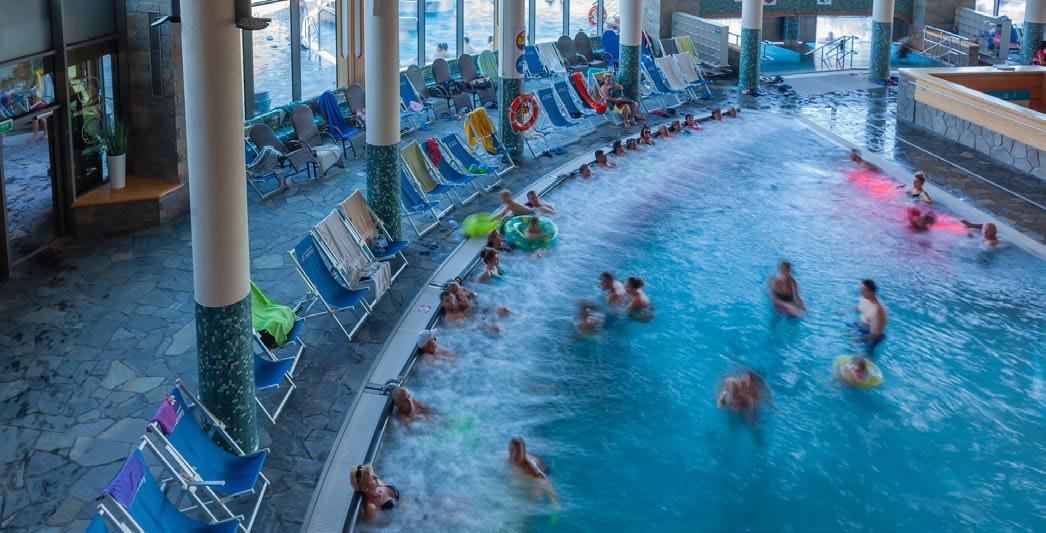
bath where you can participate in Hammam ritual with clay. The hotels of Czarny Dunajec which have treatment zones offer physiotherapeutic treatments, massages, peat wraps or baths.
The spa also has deposits of healing peat which is used in treatments. What is more, the climate of Czarny Dunajec influences the process of treatment and our well-being in a positive way – it is harsh, but it has a small number of hot days and it is not sweltering. Additionally, bioclimatic conditions are very favourable, there is fresh air and other beneficial features created by the landform. All these factors create a balneological and climatic spa which is an ideal place to treat numerous medical conditions, regain vitality and relax.
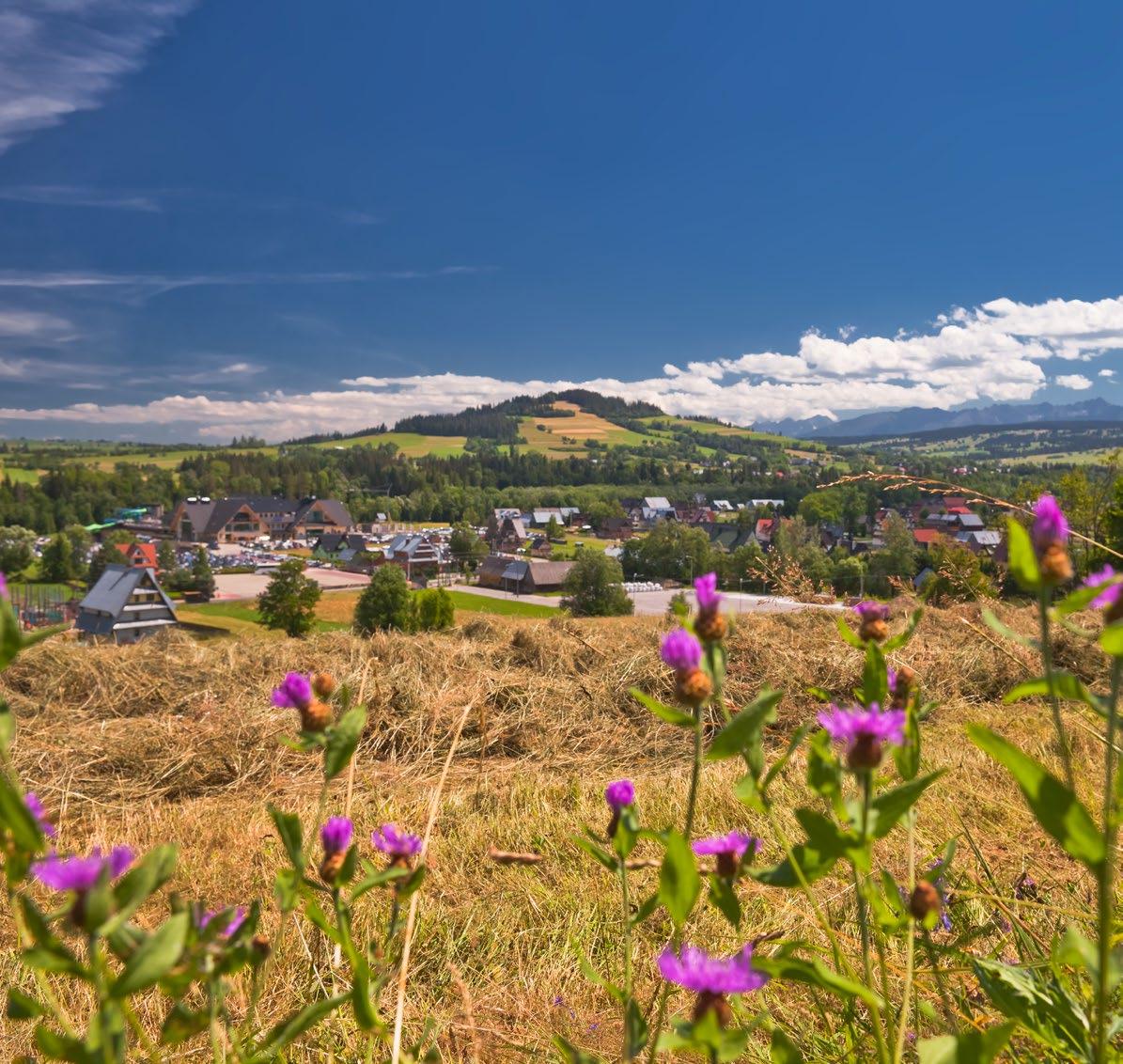
Thermal Baths and the vicinity
Czarny Dunajec SPA 10 11
Manor houses in Czarny Dunajec

In the spirit of the traditional wooden architecture from Podhale, Czarny Dunajec was a place where beautiful manor houses were constructed in the 19th century. When the fire of 1859 destroyed a significant part of buildings, the rebuilt ones were made of brick with porches supported with heavy columns. We may still admire them in Czarny Dunajec.
The traditional costume from Podhale

The costume from Podhale is one of the most recognisable folk costumes in Poland. Over the last 150 years it has changed a lot. In the middle of the 19th century, it was very modest with few decorations but at the beginning of the 20th century it was replaced by a more decorative and colourful one which is worn till today. Highlanders wear it for various occasions highlighting their origin and attachment to tradition. In the 90's of the 20th century a trend to mix folk patterns and forms with everyday clothes appeared. Items of clothing with highlander motifs can be bought in various places, not only in Podhale.
The culture of Shepherds

Podhale is famous for grazing sheep and the production of sheep cheeses out of which oscypek is the most popular one. Sheep grazing is a highly respected activity, a rich folklore has developed around it and shepherd’s customs are shrouded in local magic. A shepherd's year starts in spring when baca (a senior shepherd) and juhasi (shepherds) lead the sheep from the whole village to mountain pastures. Spring Redyk (the Spring Trailing of Sheep) is a great feast and the biggest celebration for Highlanders and takes place around the Day of Adalbert of Prague (23rd of April). Magical rituals are carried out during the trailing – they are supposed to protect sheep and shepherds from evil forces. While grazing sheep, baca and juhasi live in huts on pastures. They go down into the valleys in autumn around the Day of Saint Michael (29th September). Autumn Redyk (the Autumn Trailing of the Sheep) is another important celebration in a village during which people thank for successful grazing.

1200 1300 Approximately 1552 1400 1500
History
A probable date of the foundation of Czarny Dunajec called Dunaiecz Czarny at the time.
1592 1651 1819 1641 1720 1669-1670 1846 1925 1933 1600 1700 1900
The first fair in Czarny Dunajec.
The outbreak of Chochołów Uprising.
Czarny Dunajec was granted town rights.
Czarny Dunajec lost its town rights.
The first village administrator Tomasz Miętus together with his son Jan cleared a forest to form a village and built the first church. The information was written in the privilege for Jan issued by Sigismund II Augustus.
The Kostka-Napierski Uprising – one of numerous peasant rebellions against the starost Mikołaj Komorowski who deliberately broke the law.
2020
Nowy Targ District was taken over by the Austrian Empire. Jan Pajączkowski bought ‘Czarny Dunajec Dominium’. Highlanders who inhabited those lands bought them from Pajączkowski with the assistance of a plenipotentiary – priest Józef Szczurkowski.
1800
The battles between Highlanders with soldiers at the starost Jan Wielkopolski’s service.
Czarny Dunajec HISTORY 12 13
Adam Kazanowski, the starost, bought Czarny Dunajec from Klemens Miętus and transformed it into a manor farm.
The Jewish Cemetery in Czarny Dunajec

Founded in the second half of the 19th century, the Jewish cemetery was dedicated to the Jews from Czarny Dunajec. However, it was destroyed during the Second World War and after the war, it continued to be devastated and robbed. In 2020 it was renovated by the foundation of the Popiels within the ‘People, not numbers’ project. Now, in its central point there is a matzevah with an inscription ‘In memory of the victims of the extermination from Chochołów, Ciche, Czerwienne, Dzianisz, Miętustwo, Odrowąż, Pieniążkowice, Podczerwone, Podszkle, Ratułów, Stare Bystre, Witów, Wróblówka, Załuczne and the murdered prisoners of the labour camp in Czarny Dunajec’. There are also boards which inform about the life of the local Jewish community.
The trail of the 19th century shrines
Ciche, a village which owes its name to the Ciche Creek, delights with its Podhale architecture. Apart from old wooden cottages, we will come across beautiful 19th century roadside shrines. They are both stone and wooden and next to some of them we will find benches on which we can sit, pray or admire the scenery.
The Museum of Chochołów Uprising
In 1846 in Podhale, in Chochołów to be precise, the uprising against the Austrian invader broke out. Its leaders were local conspirators who had established contact with national activists from other regions of Podhale and Poland. The National Government planned the date of the national uprising for 21st February but it was called off due to the fact that Austrian authorities got to know about it beforehand. The information, however, did not reach Chochołów and the insurrectionists entered the fray. After the initial success, the uprising was quelled and its leaders were sentenced to many years of prison (they were freed two years later during the Springtime of Nations). The Museum of Chochołów Uprising commemorates those events. The building of the museum itself is worth our attention – it used to be a cottage which belonged to a rich man, Jan Bafia. It is the oldest cottage in Chochołów built in 1798. As many other buildings in this region, it represents Podhale architectural style. Here you can travel back in time and see the life of a 19th century Highlander family. The building consists of two rooms – the black one where people led their everyday lives and the white one devoted to special days of celebration which is sumptuously decorated. You will find there texts, boards and drawings elaborating on the Uprising.
Historic buildings in Chochołów
Chochołów is famous for its wooden buildings. You can admire there over 100 year old cottages which form a linear settlement along the main road. The log houses are covered with sloping shingled roofs. The logs are white thanks to their annual scrubbing with yellow soap and water. The houses in Chochołów are listed as monuments.
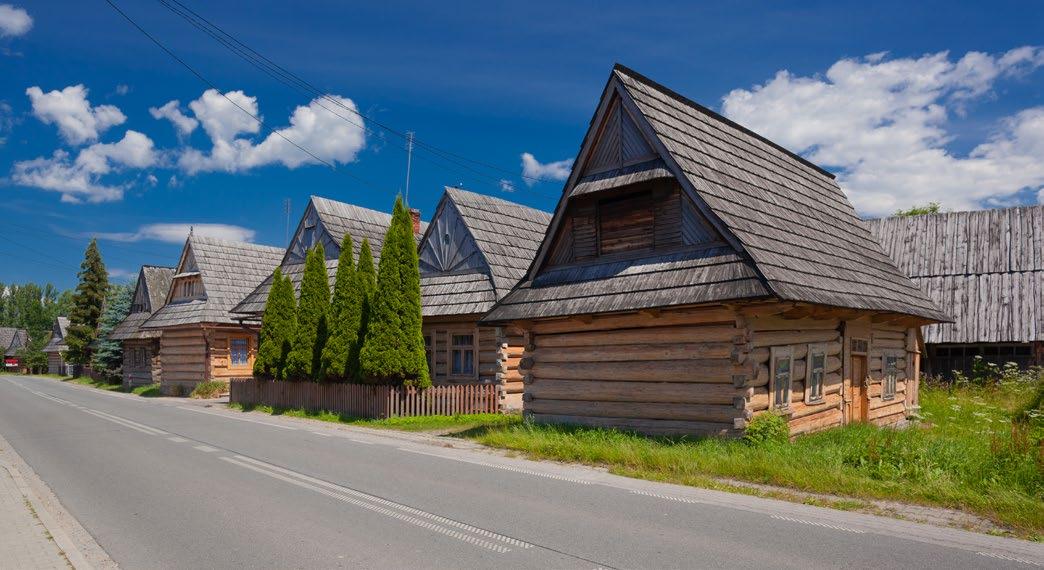
The Monastery of Jasna Góra
Pauline Fathers and Marian Sanctuary on Bachledówka
A real treat for amateurs of Podhale architecture is the Monastery of Pauline Fathers on Bachledówka. A quite interesting story is connected with the place. In the 30’s of the 20th century two women from the vicinity of Lviv bought some land close to the top of the hill. A house surrounded by a garden was built there. During the War, the women hid weapons and people in their house. When German soldiers came to search the place, one of the women was praying and promised to God her house if the soldiers didn’t find the weapons hidden in a beehive. After the war, she did as she had promised – she gave the house to the Pauline Fathers from Jasna Góra.
The most interesting ones include ‘the house from one fir tree’ whose front wall was entirely made from the wood of one, huge fir tree or Jan Zięder Regional Chamber –a private museum and a sculpting studio of a folk artist and Aniela Stanek’s gallery of glass painting.
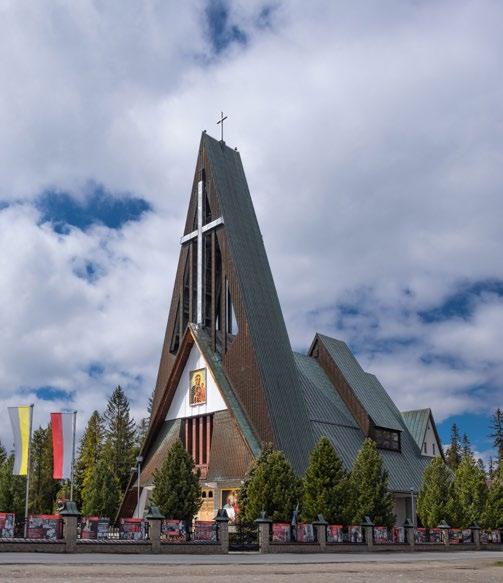

1 4 3 2 Czarny Dunajec HISTORY 14 15
Czarny Dunajec A village with a view of mountains
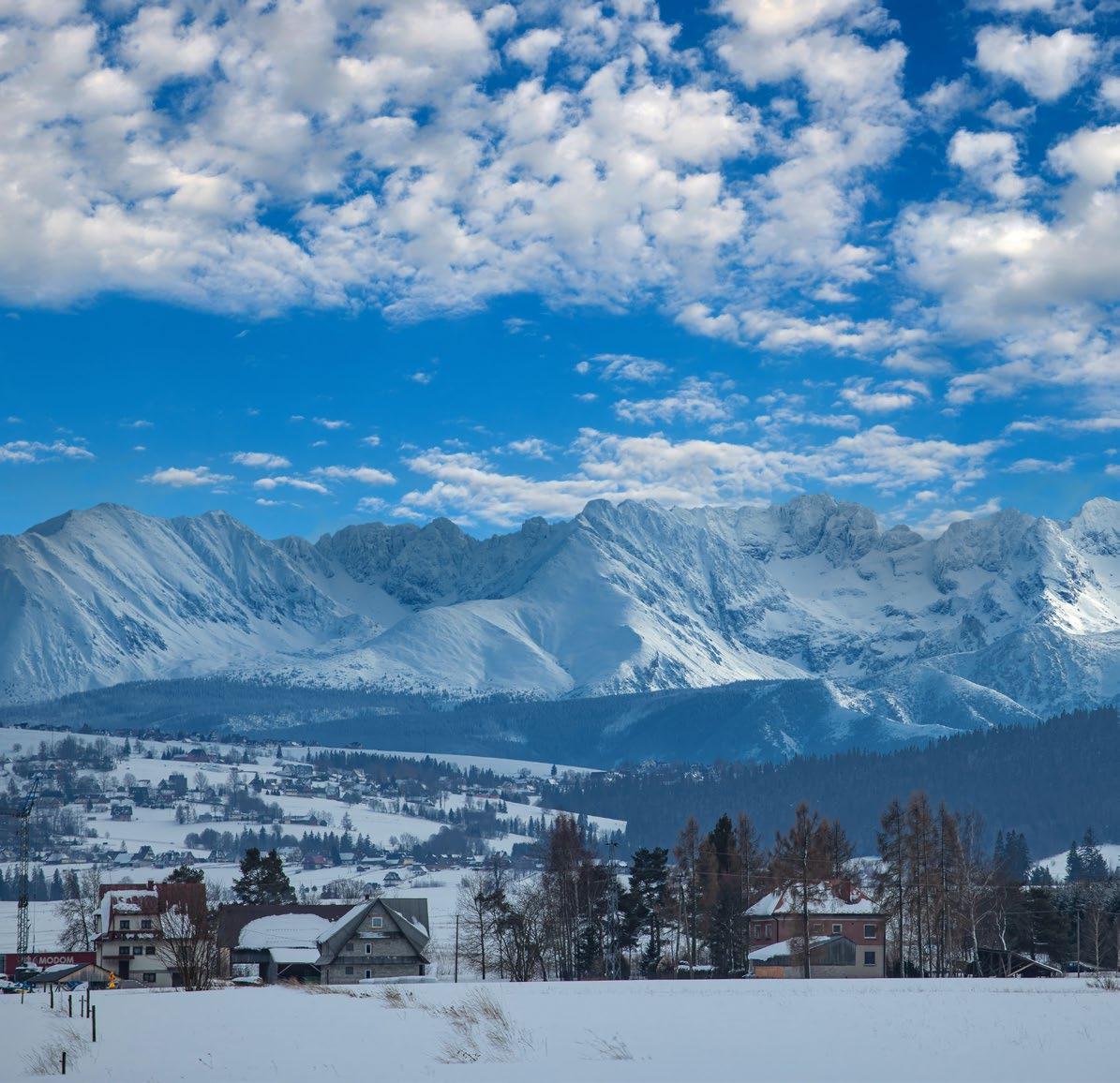
Czarny Dunajec is a village located in a place close to the Tatra, the Gorce, the Beskids and the Pieniny Mountains. People who live here work mainly in the field of agriculture and tourism. The place is particularly valuable for tourists who seek privacy, peace and quiet far from the crowds. Plenty of the locals open their houses to those who desire to rest and relax. It gives a unique chance to see up close the traditions and the culture of Highlanders and taste the local cuisine.
The village surrounds the river under the same name which is another attraction of the region. It is crossed by a number of steps creating small pools around which one can find campsites.
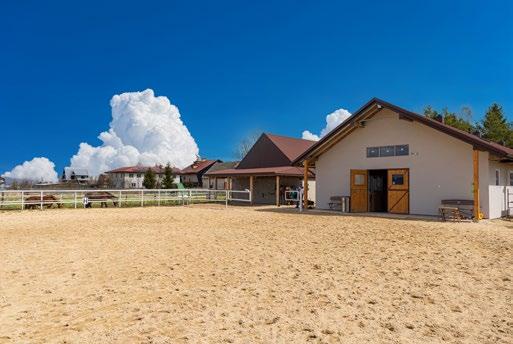
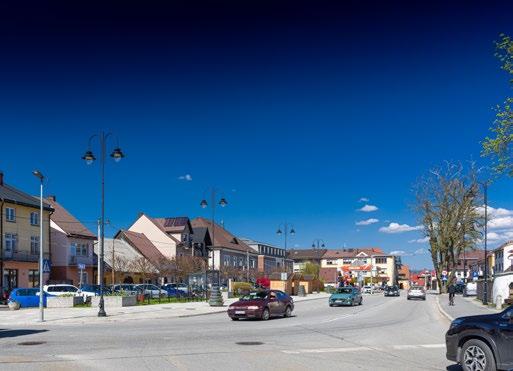

Apart from the beautiful scenery, Czarny Dunajec offers wonderful historic sites such as the Church of the Holy Trinity erected in the 19th century or the Jewish cemetery which hides the story of the Second World War.
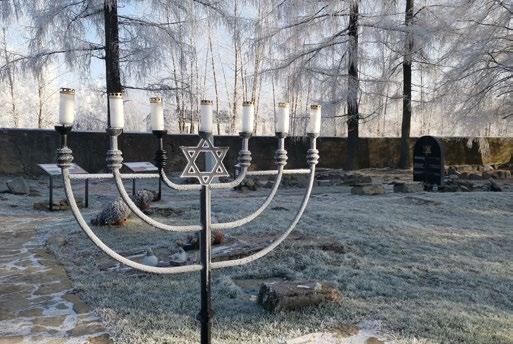
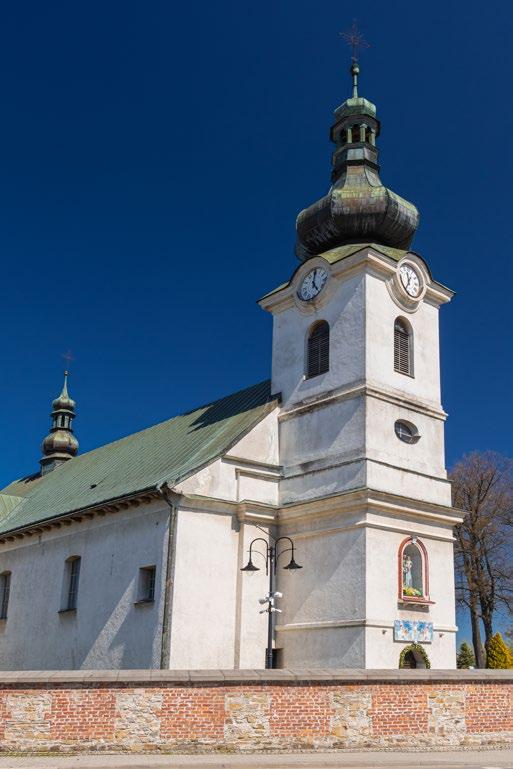
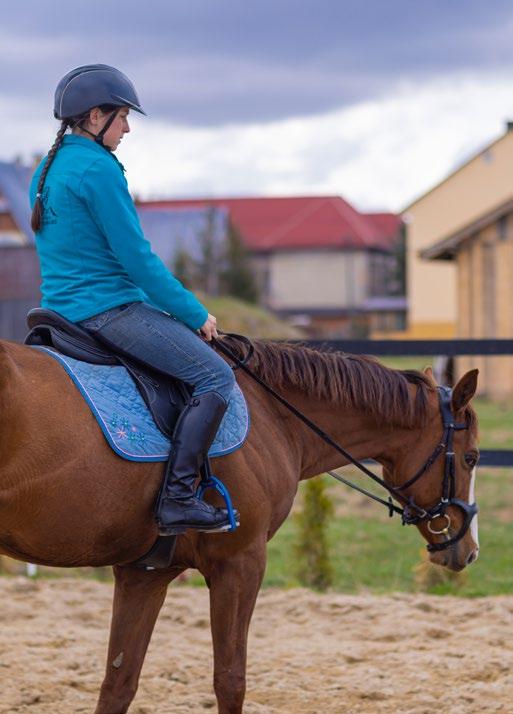 A view of the Tatras from Czarny Dunajec
The centre of Czarny Dunajec
The Church of the Holy Trinity in Czarny Dunajec
A horse stable in Czarny Dunajec
The Jewish Cemetery in Czarny Dunajec
Traditional ‘Hołdymas’
A view of the Tatras from Czarny Dunajec
The centre of Czarny Dunajec
The Church of the Holy Trinity in Czarny Dunajec
A horse stable in Czarny Dunajec
The Jewish Cemetery in Czarny Dunajec
Traditional ‘Hołdymas’
1 2 3 5 6 4 Czarny
CZARNY DUNAJEC 16 17
An agritourism farm in Czarny Dunajec
Dunajec
Chochołów
The most beautiful village in Podhale
Chochołów is a village which definitely should be singled out among other villages in the commune. Either history, architecture, nature amateurs or the ones who seek rest and relaxation will find something for themselves at the place.
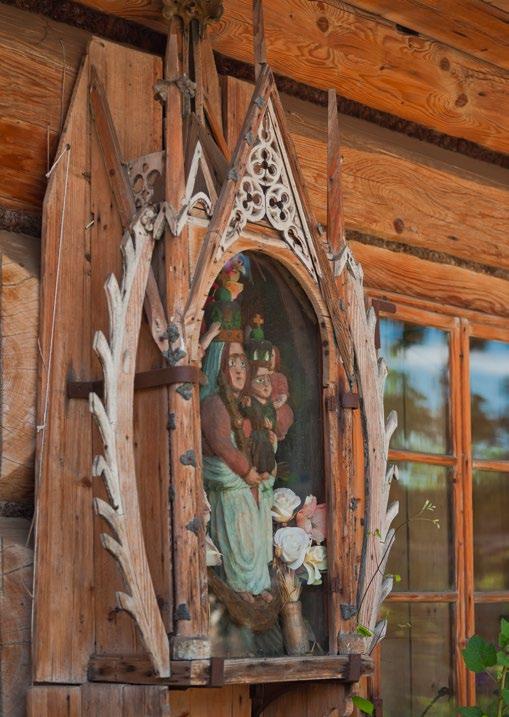


Chochołów is a truly magical spot. When you cross its borders, you can move back in time. Over a hundred still teeming with life wooden cottages (which date back to the 18th century) add to an amazing climate of the place. All of them constitute an example of Podhale architecture. One may find there museums and galleries of folk artists, the Museum of Chochołów Uprising and even the Peatland Museum which presents another treasure
of the village. The bogs located in the Orawa-Nowy Targ Basin and over the border with Slovakia constitute a real natural treat – the largest cross-country complex of bogs in the whole Carpathians. Therefore, a project which aims to protect this valuable ecosystem and educate on it was launched in agreement with our neighbours. Due to this fact, a world famous professor Jan Stach spent so much time here collecting tiny creatures – springtails –specific for the bogs.
In Chochołów as well we will find one of the biggest thermal pool complexes in Poland. One day will definitely not be enough to enjoy all the available attractions.
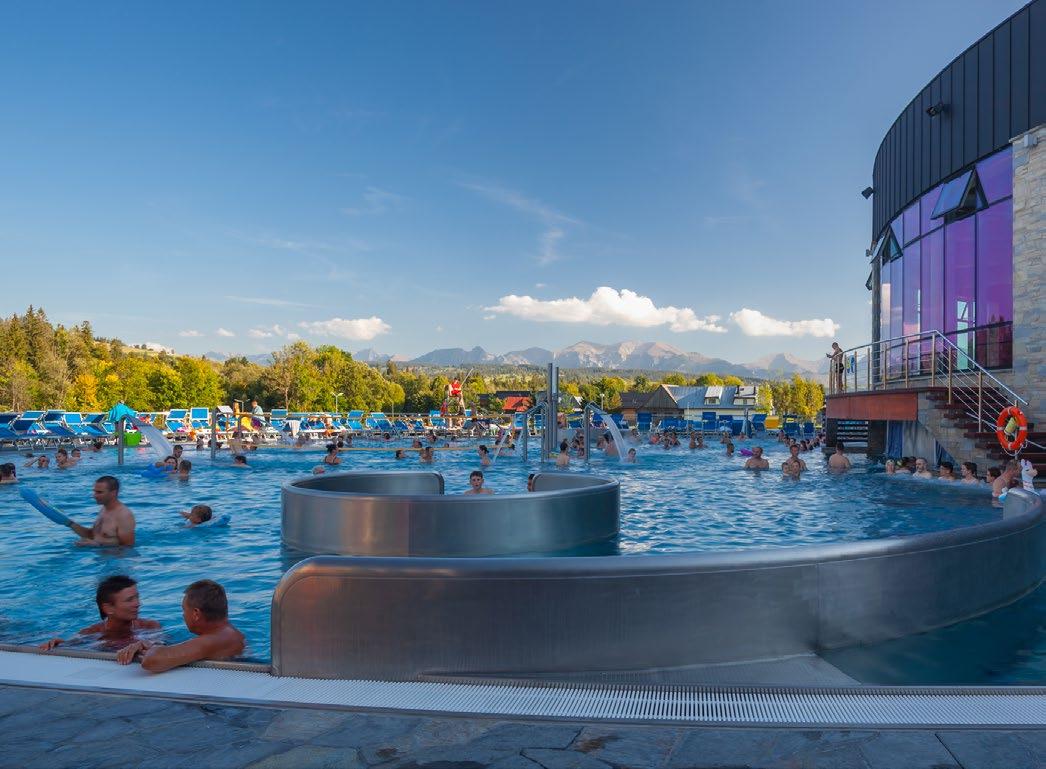 Historic buildings in Chochołów
A shrine on the Museum of Chochołów Uprising
A detail in the traditional architecture of Chochołów
Historic buildings in Chochołów
A shrine on the Museum of Chochołów Uprising
A detail in the traditional architecture of Chochołów
Czarny Dunajec CHOCHOŁÓW 18 19
Chochołowskie Thermal Baths
Highlander villages

Around Czarny Dunajec
The whole Czarny Dunajec Commune is connected with the river under the same name and creeks which feed it. The villages which are a part of the commune are famous for their magnificent architecture, still living traditions and the culture of Podhale which is visible at every turn. Numerous regional bands appear at various events adding to their special atmosphere. Folk painters and sculptors are to be found in these small villages too.
Sacral architecture in this region is also worth recommending – in Chochołów, Czarny Dunajec, Odrowąż, Piekielnik and Pieniążkowice one may admire churches from the 19th century and in Podszkle a church which dates back to the 18th century.


Podhale is known for the tradition of sheep grazing rich in various rituals, spells and beliefs from pre-Christian period and shepherds are highly respected in the community. Sheep cheese, popular in the whole country, is produced here. Oscypek is seasonal cheese made from April to October in shepherd’s huts. It is of a conical shape and smoked which gives it a characteristic flavour. It can be stored for a long time and it does not go off. You can taste other products made of sheep and cow milk such as korbacze (long cheese strips made of cow milk) or sweet żętyca (leftover whey). Bundz is cheese made of sheep milk which has a mild taste – they say the best one is made during milking in May. The village most famous for highlander cheese is Stare Bystre.
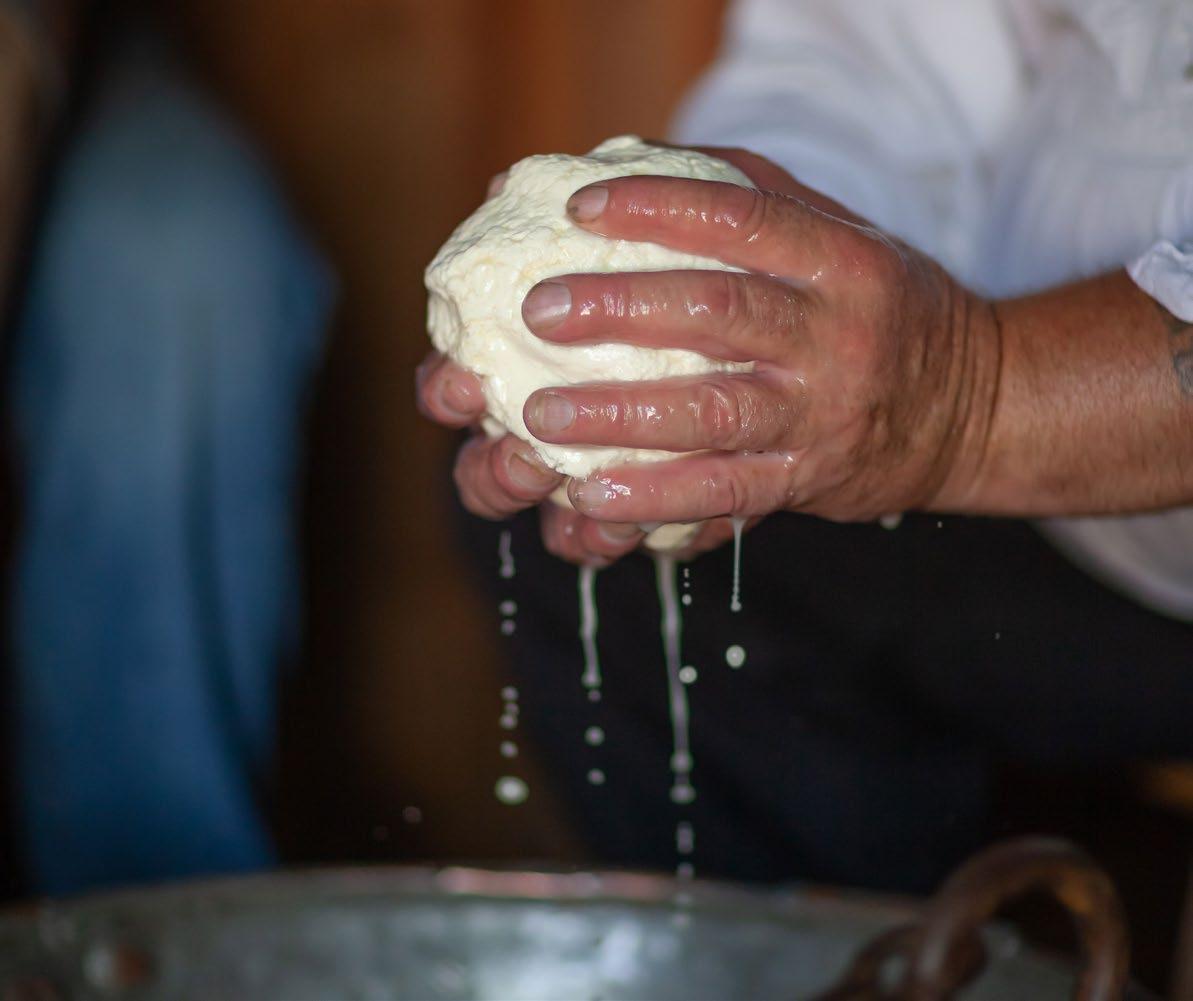 Traditional shapes for the production of Oscypek The Church of the Holy Trinity in Czarny Dunajec
The Church of St Hyacinth of Poland in Chochołów
Traditional shapes for the production of Oscypek The Church of the Holy Trinity in Czarny Dunajec
The Church of St Hyacinth of Poland in Chochołów
Czarny Dunajec HIGHLANDER VILLAGES 20 21
The manual production of sheep milk products has been ensuring their uniqueness for hundreds of years
The still living traditions of Highlanders from Podhale
THE ASSOCIATION OF HIGHLANDERS FROM PODHALE
Podhale Highlanders are the most well-known group of Polish Highlanders. They are quite a diverse community and can be divided into following groups: Rock Highlanders, Highlanders from Nowy Targ and Highlanders from Rabka. Their dialect has common features with other Highlander dialects but also specific features for this region such as archaisms. In order to cherish their cultural and custom distinctiveness, Highlanders from Podhale created in 1919 the Association of Podhale Highlanders. After the break caused by the outbreak of the Second World War, the association was re-established in 1959. There are a few branches and centres of the association in Podhale.
HIGHLANDER MUSIC
Music has always played a crucial role in Highlander tradition. It was composed spontaneously and accompanied people in their everyday lives. It was passed down without writing down the lyrics or notes. Highlanders played the instruments which they made themselves: the fife, the pipe, the trombita, the bagpipes and the gusle. Later,
at the end of the 19th century, they started using the violin. Men danced a so-called ‘Zbójnicki’ (the Dance of Brigands) which was supposed to show how strong and dexterous they were. Another dance, in pairs this time, is ‘Krzesany’ – a very fast and vibrant one. A lot of dance and song groups which associate both adults and children are active in Czarny Dunajec Commune: ‘Watra’ Highlander Band from Czarny Dunajec, ‘Mali Dunajcanie’ Children Regional Band from Czarny Dunajec, ‘Sykowni’ Children and Youth Regional Band from Załuczne, ‘Odrowążanie’ Children and Youth Band from Odrowąż Podhalański, ‘Bachledówka’ Children and Youth Regional Band from Czerwienne, the Regional Band from Dział, ‘Zeleźnica’ Highlander Band from Pieniążkowice, ‘Tatry’ Children Regional Band from Ratułów, ‘Siumni’ Highlander Band from Chochołów, ‘Mali Miętusianie’ Children Band from Miętustwo, ‘Mali Wróblowianie’ Children Band from Wróblówka, ‘Honielnik’ Children
Regional Band from Czerwienne, ‘Turnie’ Children
Regional Band from Stare Bystre, ‘Śleboda’ Highlander Band from Podczerwone-Koniówka, ‘Piekielnicanie’


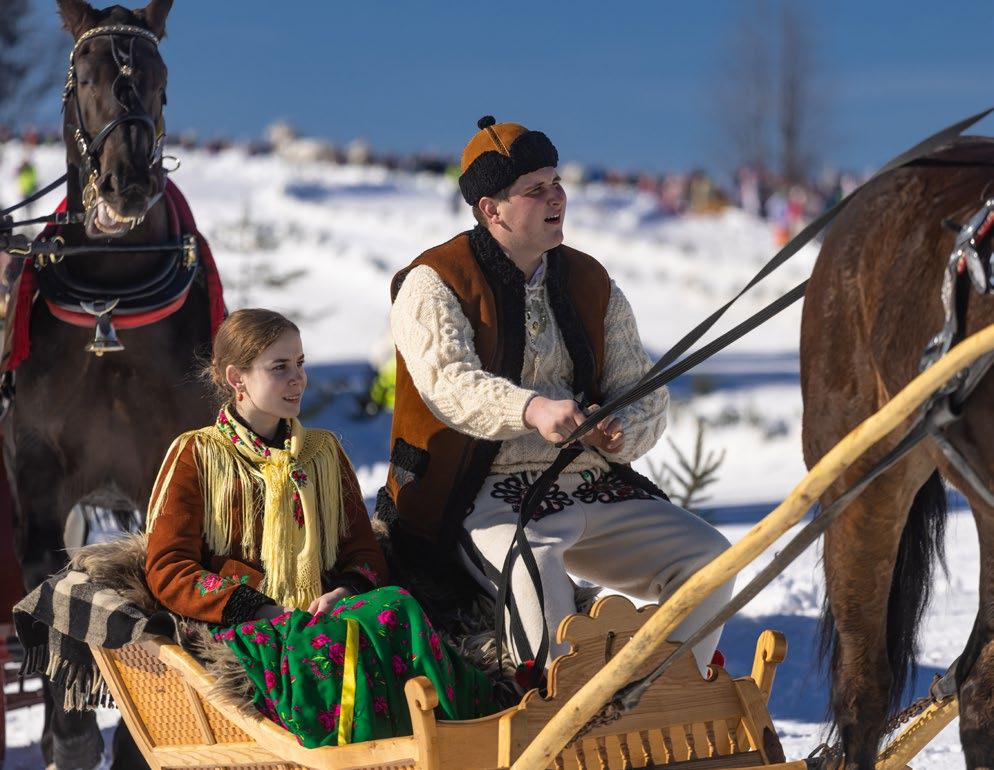
Highlander Band from Piekielnik, ‘Serdocki’ Regional Band from Podszkle, ‘Krzesany’ Children and Youth
Regional Band from Ciche, ‘Cichowianie’ Highlander Band from Ciche, ‘Zawodzianie’ Children Regional Band from Podczerwone or ‘Pieniążkowianie’ Regional Band from Pieniążkowice.
CYCLICAL EVENTS
Czarny Dunajec commune organises cultural events during which local artists present their works. ‘Muzykowanie na Duchową Nutę’ (To the Spirit’s Rhythm) is a festival of Highlander bands which took its name from a famous musician from Podhale, Andrzej Knapczyk – the Spirit from Ciche Wielkie. ‘Przepatrzowiny Teatrów Regionalnych’ (the Overview of Regional Theatres) is a competition for amateur theatre groups from the whole voivodeship. ‘Przeziyracka Młodych Toniecników i Śpiywoków Góralskich’ (the Overview of Young Talents and Highlander Musicians) is an event at which local singers and dancers can present themselves. ‘Hołdymas’, which is a harvest fair, is an exceptionally colourful event. The most beautiful event is Pope May Devotions of Bachledówla.
SACRED ARCHITECTURE SITES
Czarny Dunajec together with nearby villages is not only known for houses in the traditional architecture style of Podhale. There are many interesting churches such as the Church of Saint Hyacinth of Poland in Chochołów from the years 1853 – 1866, the Church of the Holy Trinity in Czarny Dunajec from the years 1863 – 1865, the Church of Saint Rosalia in Podszkle from 1787, the Church of Mary Magdalene in Odrowąż from the years 1825 – 1831, the Church of Saint Jacob in Piekielnik from 1878, the Church of Mother of God of Sorrows in Pieniążkowice from 1900, the Church of Holy Virgin Mary, the Queen of Poland in Ciche-Miętustwo from the years 1924 – 1928, the Chapel of the Most Sacred Heart of Jesus in Załuczne from the years 1930 – 1931.
In Koniówka, Ciche and Czerwienne we will find wooden bell towers with a shingled roof from the 19th century. The whole commune is dotted with wooden and stone shrines, crosses and figures which date back to the 19th and even the 18th century.

1
The Church of St Hyacinth of Poland in Chochołów Highlander traditions and culture in Czarny Dunajec are still living
HIGHLANDER VILLAGES 22 23 3 4 2
Czarny Dunajec
Commune in an active way
Mountain trails
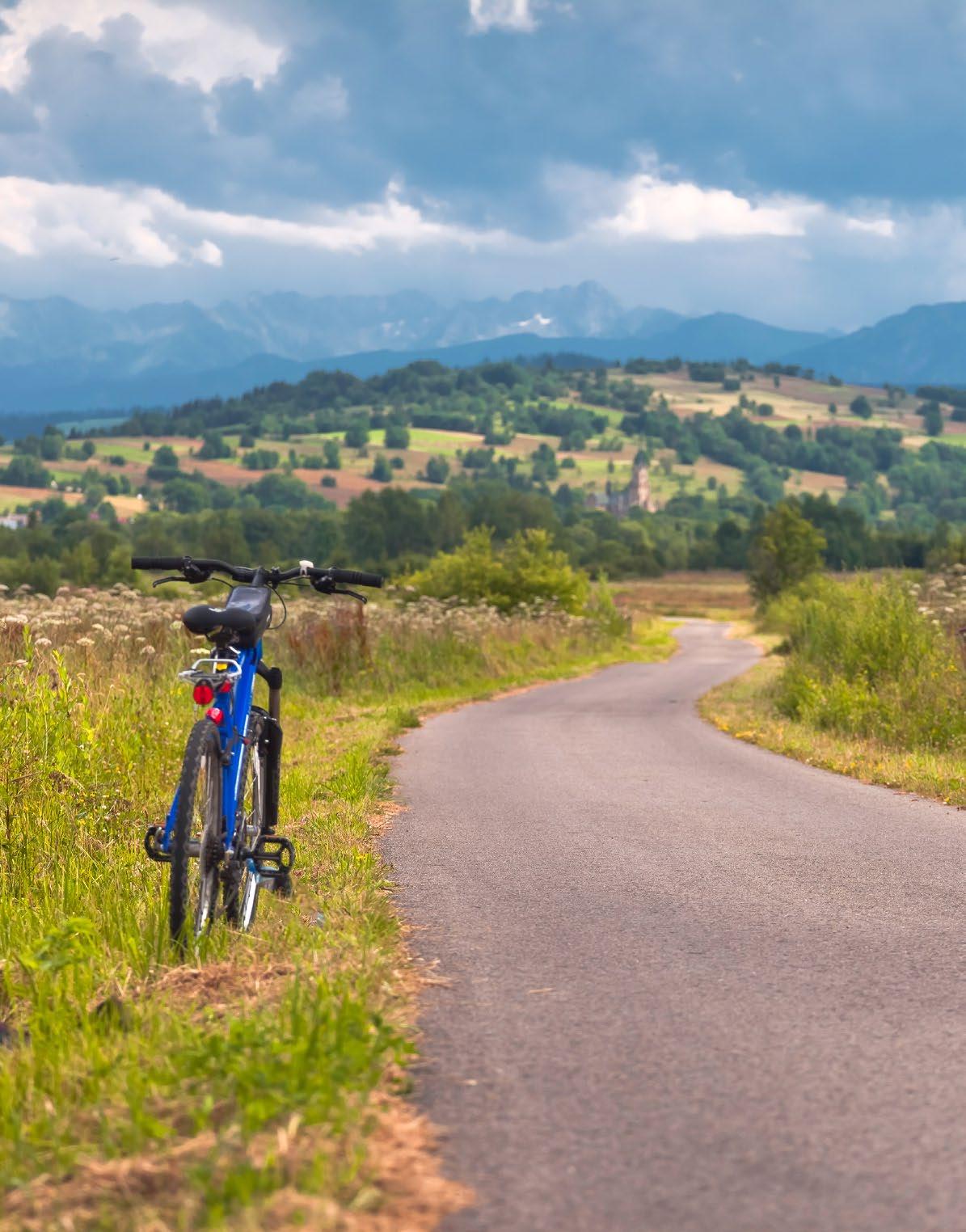
Czarny Dunajec Commune does not abound in many trails but there are a few mountains from which beautiful views spread.

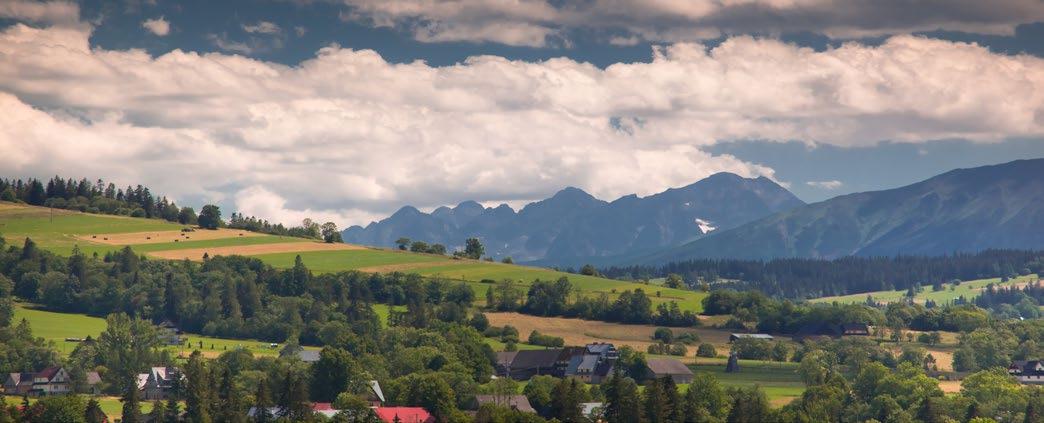
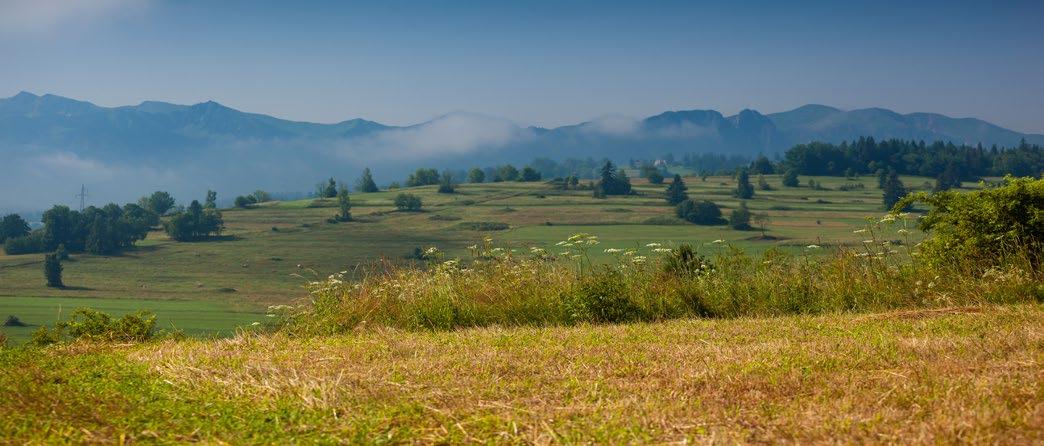 the Cycling Route around the Tatras and an exit to Chochołów
The red trail from Pieniążkowice through the hills of the Orawa Basin or, in the opposite direction, to Ludźmierz.
The red trail from Chochołów to Slovakia or, in the opposite direction, to Gubałówka,
The green trail from Czerwienne to Szaflary or, in the opposite direction, to Zakopane,
the Cycling Route around the Tatras and an exit to Chochołów
The red trail from Pieniążkowice through the hills of the Orawa Basin or, in the opposite direction, to Ludźmierz.
The red trail from Chochołów to Slovakia or, in the opposite direction, to Gubałówka,
The green trail from Czerwienne to Szaflary or, in the opposite direction, to Zakopane,
COMMUNE IN AN ACTIVE WAY 24 25
Czarny Dunajec
THE HISTORIC, CULTURAL, NATURE CYCLING ROUTE AROUND THE TATRAS

The famous Cycling Route around the Tatras goes through Czarny Dunajec Commune. New cycling paths, loops, links and side cycling trails are constantly being added to it. Until 2021, 60 km of cycling routes and cycling trails had been put into use in the area of the commune. Almost the whole commune, 15 villages, was incorporated into the system of trails. Along with the construction of cycling paths, bus shelters, information spots and other tourist infrastructure which encourages sightseeing such as landscape telescopes were created. The commune renovated the former rail station in Podczerwone – currently the building serves as a place for rest for cyclists and an information spot on the history of
the Polish rail. Moreover, there is an exposition, a charging station, a repair station and a bike rental. There is also a catering spot for those who want to gain strength before hitting the trail again. It is a great example of an innovative form of saving historic sites and giving them new functions. Czarny Dunajec Commune organises numerous cycling excursions, family bike picnics which promote a healthy lifestyle and encourage environmentally friendly active tourism. The commune promotes healthy ways of spending free time as an alternative to sightseeing and travelling by car. In 2021 new routes which go through beaver camps located within the area of Orawa-Nowy Targ Boglands were put into use.
FISHING IN PODHALE

The rivers and streams of Podhale are a real treat for the enthusiasts of fishing. The Czarny Dunajec within the 30 km section between the Tatras and Czarny Dunajec, the village, is a great spot for catching fish. It is worth remembering that only fly-fishing is allowed there. From the mouth of the Lepietnica Creek into the Czarny Dunajec there is a no-kill zone which means that you have to free all the caught fish.
KAYAKING ON THE CZARNY DUNAJEC
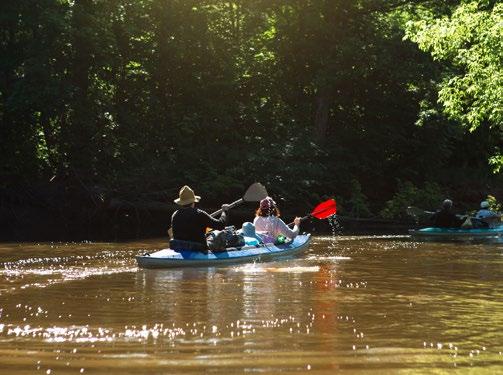
The Czarny Dunajec River is an attraction as such. Apart from fishing or swimming in pools created by water steps, you are able to try your hand at kayaking. The upper part of the river is for more advanced ones as it is a natural, fast-flowing section which is not regulated at all. However, from Koniówka the Czarny Dunajec is more placid but you can come across water steps over which you need to carry a kayak.
SPORTS STADIUM IN CZARNY DUNAJEC

Tourists and local people have a sports stadium (100 x 60 m) with an artificial surface at their disposal. Next to it, there is a zone with a playground, a multifunctional playing field, outdoor gym equipment, chess tables and even a gazebo where artistic performances or dances may be organised. There is a barbecue and a campfire site.
OSCYPEK ROUTE
Oscypek is one of these products which are recognisable in different parts of the world. Its name, shape, production process and composition are protected by the European Union certificate. The Association of Sheep and Goat Breeders and the Association of Podhale Highlanders, Tatra, Nowy Targ and Żywiec Poviat had been trying to get the certificate for 8 years! There is also a trail leading from one shepherd’s hut to another one and comprises 50 of them. In each of them baca (a senior shepherd) tells a story about sheep, cheese and his life in the Highlander dialect. Everything is embellished with highlander costumes and the sound of the trembita which can be heard during the Trailing of the Sheep. All of this creates an extraordinary atmosphere. In Czarny Dunajec such a shepherd’s hut is located on Baligówka close to the Boglands.
HORSE RIDING
Due to the landform and the fact that the land of the commune is not spatially developed, the commune has great conditions to ride a horse. There are two horse riding clubs: Hajnos Ranch in Czarny Dunajec and Lider Stable in Wróblówka. They offer horse riding camps and lessons.


Actively in summer
A shepherd’s hut in Czerwienne
1 4 5 6 3 2 Czarny Dunajec COMMUNE IN AN ACTIVE WAY 26 27
Cycling tourism in Czarny Dunajec Commune
Actively in winter
Czerwienne Ski Station
Czerwienne Ski Station is situated in a quiet corner of Podhale. The available run is 620 metres long and the altitude difference is 110 metres. It is very wide, diverse in terms of difficulty, regularly groomed and well-lit. The ski lift has a transport capacity of 850 people per hour. You will find there a ski rental and a ski school – CzerwienneSki. If you feel that you need a break from skiing, there is a perfect place for it – ‘Na Budzu’ Regional Restaurant and Pizza Place. Wooden decor and highlander music add to the charm of this place.
Chochołów Ski Jumping Complex
Two ski jumps located in Chochołów attract both ski jumpers and fans of this sport. KS Chochołów, a ski jumping club, has been training children and youth since 2010 in ski jumping, nordic combined, cross-country skiing and since 2018 freestyle as well.
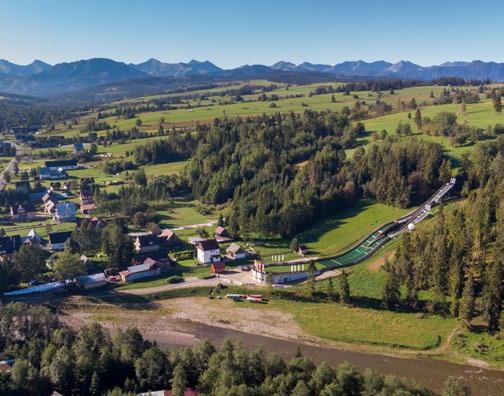
The ice rink in Czarny Dunajec
The ice rink in Czarny Dunajec invites all the enthusiasts of winter sports. It can hold 70 people on a 20 x 40 m slab. The facility is roofed, has toilets, changing rooms, an equipment rental and a skate sharpening service.
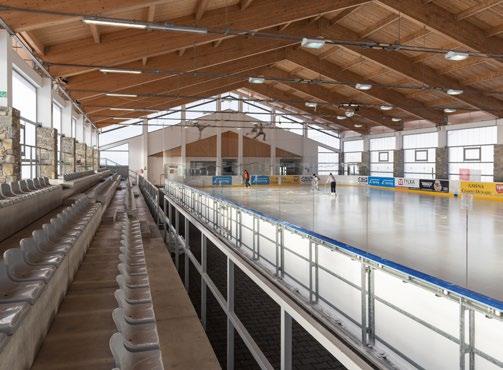
Cross-country skiing routes
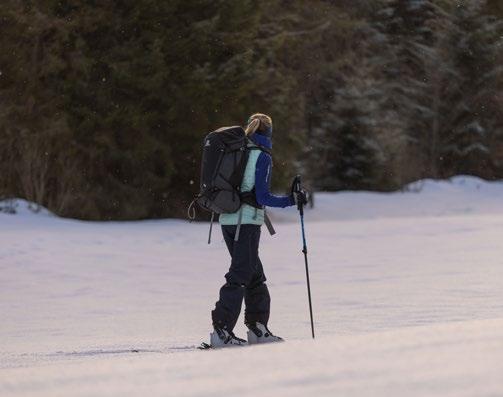

In winter, as long as weather conditions are appropriate, the Cycling Route around the Tatras transforms into a cross-country skiing route. Czarny Dunajec Commune makes 20 km of picturesque trails available to the amateurs of this sport. There are two interesting paths – the first one leads through the bogs of Czarny Dunajec and the second one from Czarny Dunajec to Podczerwone. Both of them reach Chochołów.

ACTIVELY IN WINTER 28 29
Czarny Dunajec
The project ‘The support of small and medium-sized enterprises which operate in tourism and increasing the recognisability of Lesser Poland as a tourist economic brand’ (nr RPMP.03.03.01-12-0593/18) co-funded by the European Union as a part of the Regional Operational Programme of Lesser Poland for the years 2014 – 2020.
the Foundation for the Development of Regions

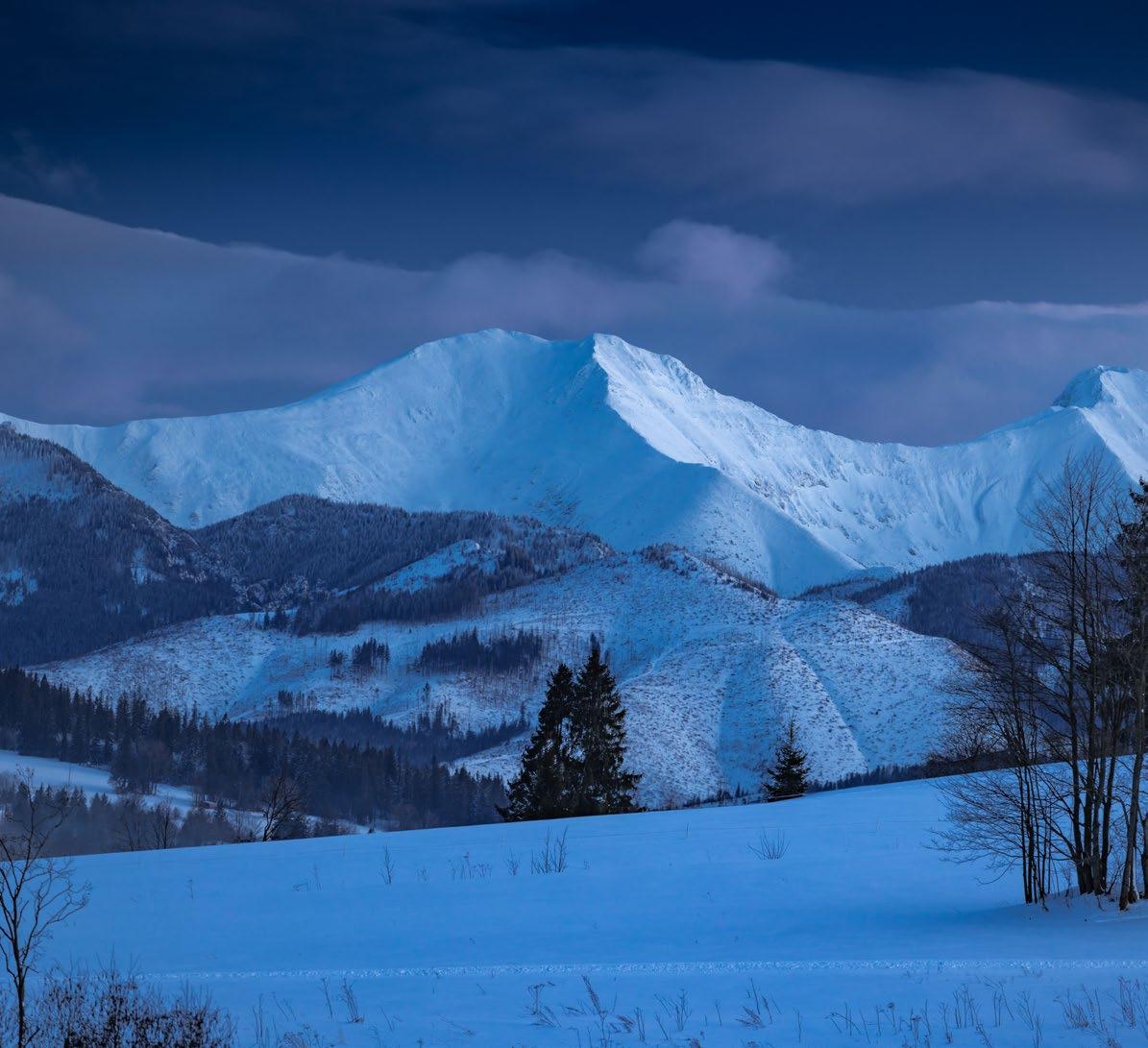
www.f-rr.org

the Association of Polish Spa Communities
www.sgurp.pl
 The project is co-funded by the Regional Operational Programme of Lesser Poland for the years 2014 – 2020. The support of small and medium-sized enterprises which operate in tourism and increasing the recognisability of Lesser Poland as a tourist economic brand.
The project is co-funded by the Regional Operational Programme of Lesser Poland for the years 2014 – 2020. The support of small and medium-sized enterprises which operate in tourism and increasing the recognisability of Lesser Poland as a tourist economic brand.
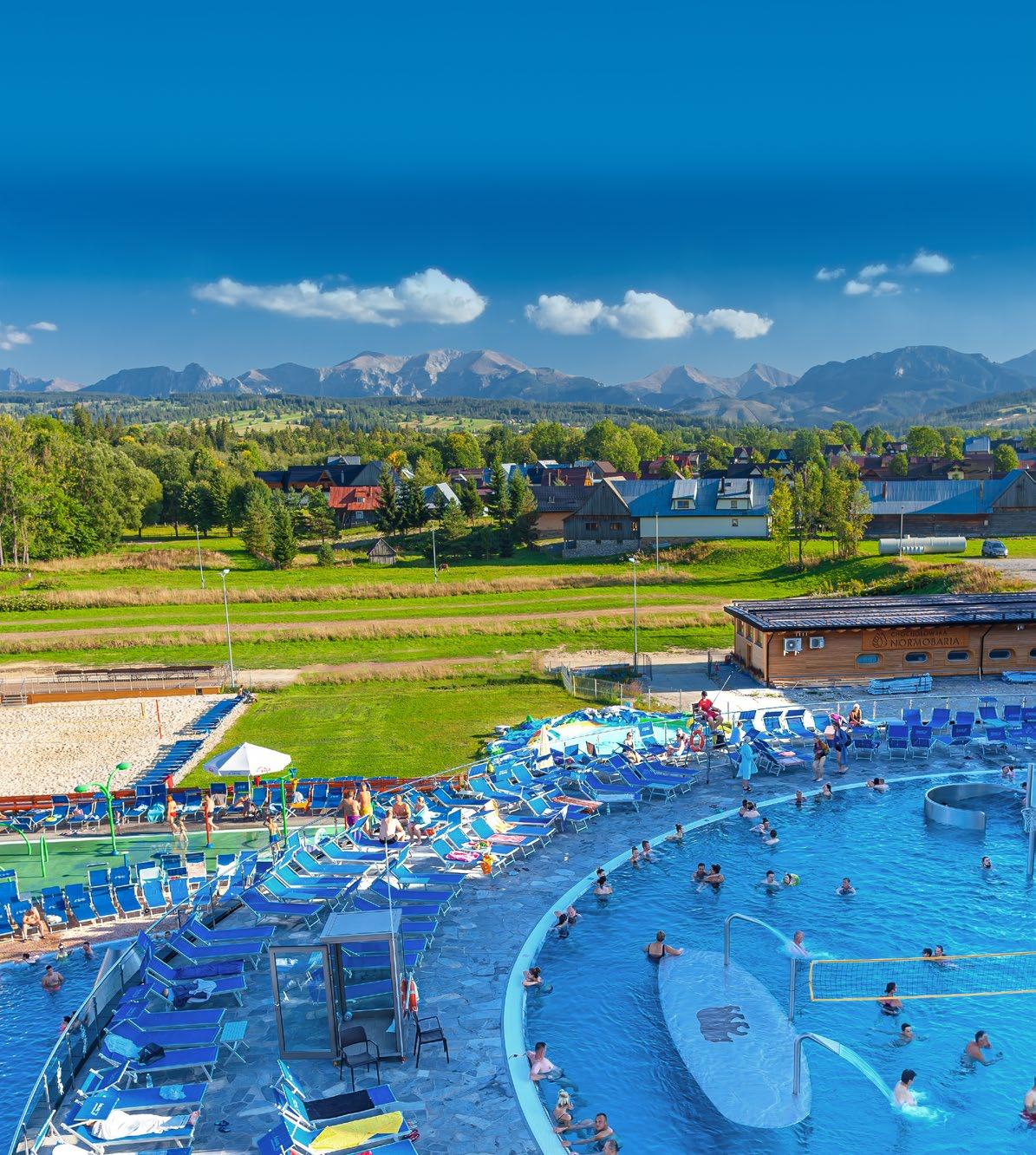



 The project is co-funded by the Regional Operational Programme of Lesser Poland for the years 2014 – 2020. The support of small and medium-sized enterprises which operate in tourism and increasing the recognisability of Lesser Poland as a tourist economic brand.
The project is co-funded by the Regional Operational Programme of Lesser Poland for the years 2014 – 2020. The support of small and medium-sized enterprises which operate in tourism and increasing the recognisability of Lesser Poland as a tourist economic brand.
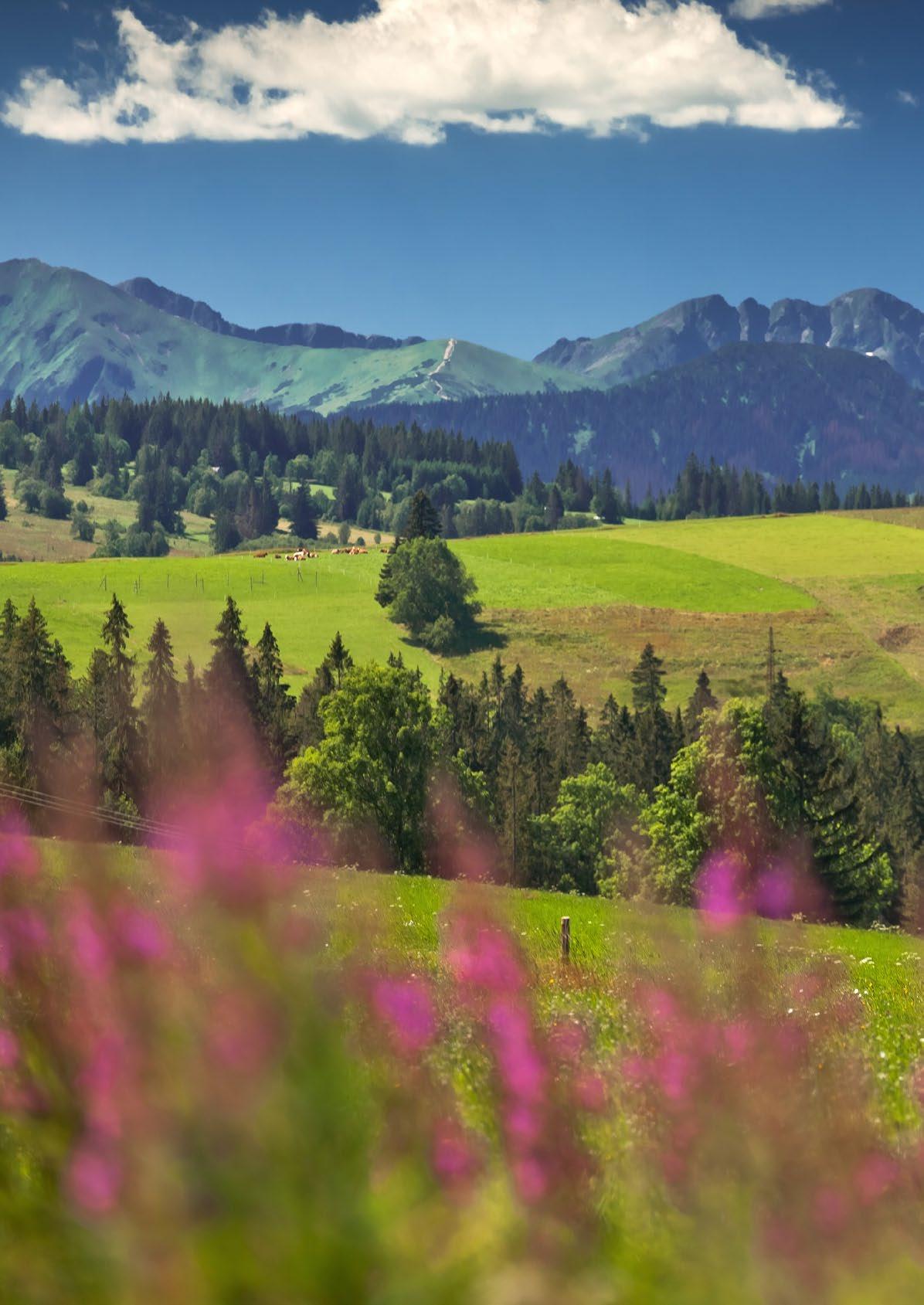















 The Cycling Route around the Tatras in Podczerwone
The Cycling Route around the Tatras in Koniówka
Meadows over Piekielnik
Baligówka Boglands in Czarny Dunajec
The Tatras seen from over Chochołów
Chochołów – Thermal Baths and the vicinity
The Cycling Route around the Tatras in Podczerwone
The Cycling Route around the Tatras in Koniówka
Meadows over Piekielnik
Baligówka Boglands in Czarny Dunajec
The Tatras seen from over Chochołów
Chochołów – Thermal Baths and the vicinity
























 A view of the Tatras from Czarny Dunajec
The centre of Czarny Dunajec
The Church of the Holy Trinity in Czarny Dunajec
A horse stable in Czarny Dunajec
The Jewish Cemetery in Czarny Dunajec
Traditional ‘Hołdymas’
A view of the Tatras from Czarny Dunajec
The centre of Czarny Dunajec
The Church of the Holy Trinity in Czarny Dunajec
A horse stable in Czarny Dunajec
The Jewish Cemetery in Czarny Dunajec
Traditional ‘Hołdymas’



 Historic buildings in Chochołów
A shrine on the Museum of Chochołów Uprising
A detail in the traditional architecture of Chochołów
Historic buildings in Chochołów
A shrine on the Museum of Chochołów Uprising
A detail in the traditional architecture of Chochołów



 Traditional shapes for the production of Oscypek The Church of the Holy Trinity in Czarny Dunajec
The Church of St Hyacinth of Poland in Chochołów
Traditional shapes for the production of Oscypek The Church of the Holy Trinity in Czarny Dunajec
The Church of St Hyacinth of Poland in Chochołów







 the Cycling Route around the Tatras and an exit to Chochołów
The red trail from Pieniążkowice through the hills of the Orawa Basin or, in the opposite direction, to Ludźmierz.
The red trail from Chochołów to Slovakia or, in the opposite direction, to Gubałówka,
The green trail from Czerwienne to Szaflary or, in the opposite direction, to Zakopane,
the Cycling Route around the Tatras and an exit to Chochołów
The red trail from Pieniążkowice through the hills of the Orawa Basin or, in the opposite direction, to Ludźmierz.
The red trail from Chochołów to Slovakia or, in the opposite direction, to Gubałówka,
The green trail from Czerwienne to Szaflary or, in the opposite direction, to Zakopane,












